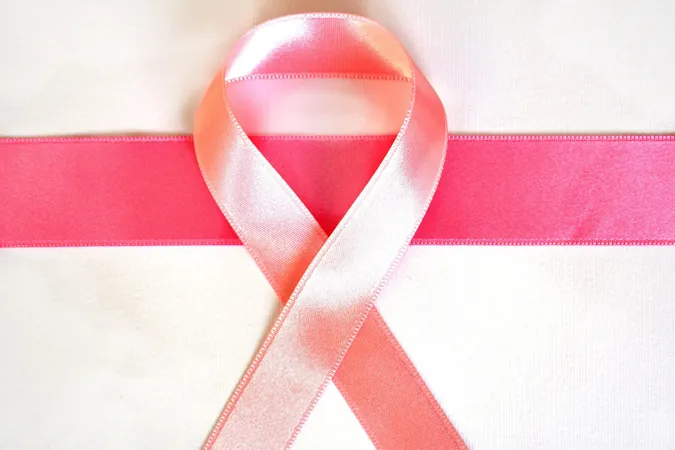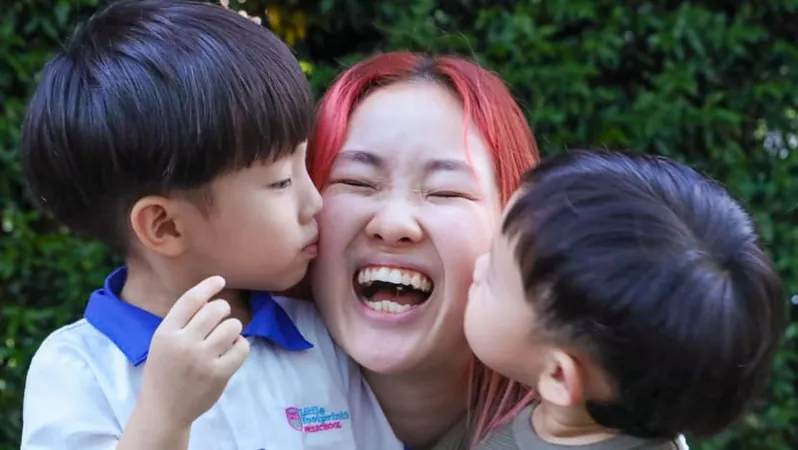
Attention Young Women: Breast Cancer Risk is Rising – Here’s What You Need to Know
2024-11-03
Author: Mei
Introduction
Recent statistics reveal a concerning trend: breast cancer rates in the United States have increased by 1% annually from 2012 to 2021. While this rise affects women of all ages, the most alarming increases have been noted in women under 50, particularly among Asian American and Pacific Islander women. This was unveiled in the American Cancer Society's latest report, "Breast Cancer Facts & Figures 2024-2025," released in October 2024.
Current Statistics and Mortality Rates
Breast cancer remains the second leading cause of cancer deaths among women, surpassed only by lung cancer. Thankfully, advances in early detection and treatment have contributed to a remarkable 44% decrease in overall mortality rates since 1989. However, disparities persist, especially among different racial and ethnic groups. For instance, mortality rates for Native American women have remained stagnant for three decades, while Black women, although showing lower incidence rates compared to white women, face a staggering 38% higher risk of dying from the disease.
Expert Insights
Dr. Laura Collins, a breast pathology specialist at Beth Israel Deaconess Medical Center and a professor at Harvard Medical School, emphasized the importance of these findings during her interview discussing the report. She stated that the rising incidence of breast cancer in younger women, although anecdotally observed in clinical settings, was surprising to see formally documented.
Possible Contributing Factors
Several factors may contribute to this uptick. Lifestyle changes such as delayed childbirth, rising obesity rates, and sedentary habits are among the potential culprits. Moreover, environmental factors like microplastics have raised concerns among researchers, warranting further investigation into their impact on breast cancer risks.
Call for Awareness and Action
Despite an overall stabilization in breast cancer rates, the increasing diagnosis in younger demographics calls for heightened awareness and advocacy. With improvements in screening methods, early detection has led to a previous decline in incidence rates. However, the concerning trend among younger women necessitates urgent action.
Demographic Disparities in Breast Cancer Statistics
The report also highlighted significant demographic disparities in breast cancer statistics. Systemic issues, such as racism and healthcare access, contribute to these differences. Black women often receive diagnoses at later stages and experience biologically more aggressive forms of cancer. Geographical disparities further complicate early detection, reinforcing the need for equitable care.
Unique Challenges for Younger Women
Younger women facing breast cancer are confronted with unique challenges. Often perceived as a condition primarily affecting older women, any breast abnormality in younger individuals may be prematurely dismissed as benign. This mindset can lead to hazardous delays in proper evaluation and treatment. Dr. Collins underscores the importance of taking any breast changes seriously and securing timely follow-ups with healthcare professionals.
Empowering Young Women
To empower younger women, experts recommend proactive self-advocacy. The U.S. Preventive Services Task Force recently lowered the screening age from 50 to 40, encouraging early dialogue about family history and individual risk factors. Anyone with a lump or abnormality should ensure that further investigations are conducted without delay.
Hope for the Future
Despite the grim statistics, there is hope on the horizon. Research initiatives focused on young women with breast cancer are gaining momentum, enhancing our understanding of their unique needs and biological differences compared to older patients. Furthermore, addressing psychosocial concerns like career impacts, fertility issues, and family responsibilities is crucial as these women navigate their treatment journeys.
Conclusion
As breast cancer awareness sharpens and ongoing studies materialize, the collective actions of healthcare providers, researchers, and advocates could pave the way for improved outcomes for all women, particularly the younger generation grappling with this escalating risk. Stay informed, be vigilant, and take charge of your health!





 Brasil (PT)
Brasil (PT)
 Canada (EN)
Canada (EN)
 Chile (ES)
Chile (ES)
 España (ES)
España (ES)
 France (FR)
France (FR)
 Hong Kong (EN)
Hong Kong (EN)
 Italia (IT)
Italia (IT)
 日本 (JA)
日本 (JA)
 Magyarország (HU)
Magyarország (HU)
 Norge (NO)
Norge (NO)
 Polska (PL)
Polska (PL)
 Schweiz (DE)
Schweiz (DE)
 Singapore (EN)
Singapore (EN)
 Sverige (SV)
Sverige (SV)
 Suomi (FI)
Suomi (FI)
 Türkiye (TR)
Türkiye (TR)